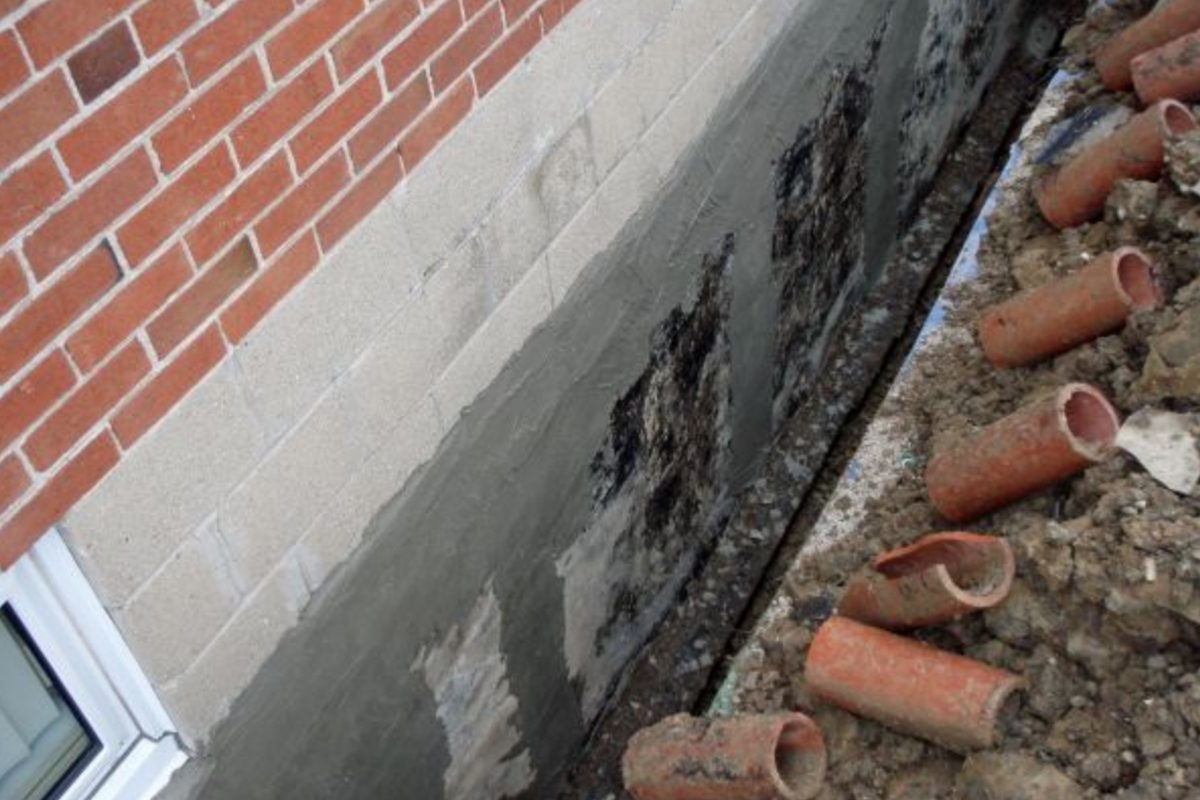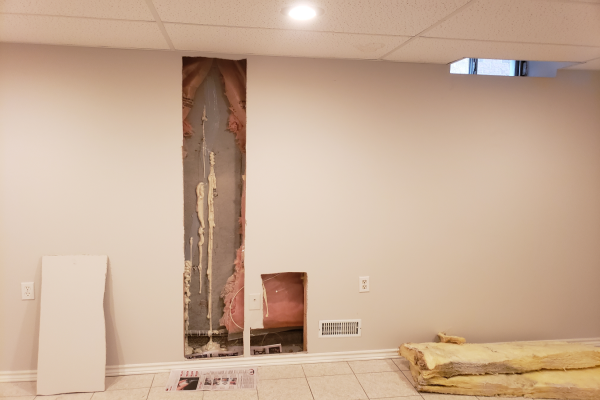External excavation and waterproofing is a viable, but relatively expensive, way to stop a leak through a poured concrete foundation. While this waterproofing method is now considered to be an old fashioned, expensive and destructive way to stop basement leaks, there are times when this waterproofing repair method is the most appropriate one.
Usually, a foundation is waterproofed externally when waterproofing cannot be done from the inside of the home. Some homeowners will opt for external excavation and waterproofing when the finished basement walls cannot be opened or accessed; this is often the case when there are leaks behind expensive finished wet bars, teak panelling, fireplaces, and built-in wall units.
External excavation and waterproofing typically refers to the waterproofing of an entire wall or some part thereof. External crack repairs are also done by excavating the foundation, in a relatively small area, at the crack location.
The illustration below shows the general configuration of an externally waterproofed wall (without the foundation coating on the wall behind the air gap membrane).
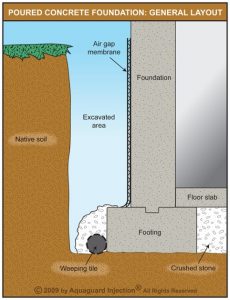
The steps involved in excavating and waterproofing a foundation
External excavation and waterproofing is a relatively simple process; the steps are as follows:
- A determination is made with respect to the amount of external waterproofing that needs to be done;
- The accessibility of the area requiring excavation is assessed;
- The location for placement of the excavated soil is established;
- A call is made for the locates (location of known underground gas, hydro, cable and telephone lines);
- Adequate clearance for excavator access is prepared (usually 42″ wide); therefore, it may be necessary to remove a fence post or other obstructions impeding excavator access (unless the excavation is to be done by hand);
- Shrubs and bushes along the excavation area are removed;
- Air conditioning units in the excavation area are disconnected and moved;
- The area to be waterproofed is excavated;
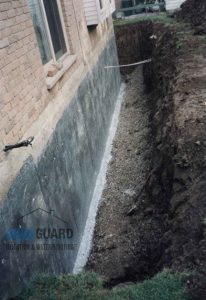
8. The wall to be waterproofed is cleaned;
9. A waterproof coating is applied onto the foundation wall;
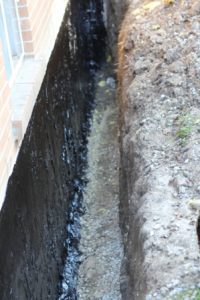
10. The existing weeping tile, within the excavated area, is removed and new weeping tile is installed and connected to the existing system;
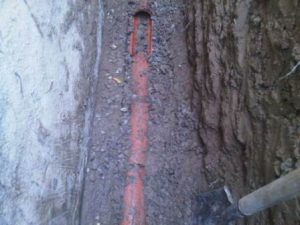
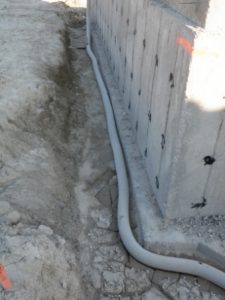
11. The proper functioning of the existing weeping tile system is confirmed;
12. A gravel layer is installed around the newly installed weeping tile;
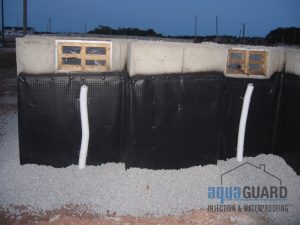
13. A damp-proofing air-gap membrane is installed over the waterproof coating; and
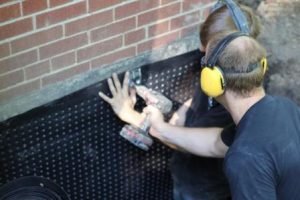
14. The excavated area is backfilled.
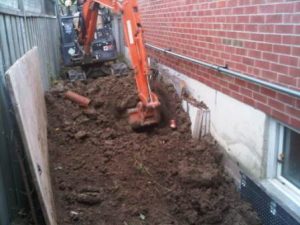
The risks associated with external excavation and waterproofing
There are definitely risks associated with excavating a foundation; this is a list of the major risks:
- If improper excavation practices are used, there is the risk that a worker may be injured or killed by a soil cave-in; (the deeper the dig, the greater the risk)
- Failure to get underground utilities mapped out could result in significant damage to gas and hydro lines, which could even result in an explosion;
- The installation of new weeping tile must be done properly; if not, proper drainage will be impeded; and
- The failure to protect the ground upon which the excavator travels can result in higher landscaping restoration costs upon completion of the basement waterproofing work; and
- If the excavation is not protected by fencing overnight there is a risk that someone might fall in and injure themselves.
Factors affecting the cost of excavating and waterproofing a foundation:
- Digging by hand is more expensive than digging with an excavator;
- Hand digging under a deck is a very expensive proposition;
- The length, depth, and location of the excavation are the primary determinants of the cost;
- The need for a corridor dig (where soil must be transported by wheelbarrow or with a skid steer (Bobcat) to the front or back of the home because there is no room to pile the soil near the excavated area) adds significant cost;
- The need to cut and/or remove and dispose of poured concrete or asphalt covering the area to be excavated adds cost; and
- The cost of landscaping once the waterproofing work has been completed.
Prior to the start of work, it is crucial that you confirm that the locations of the underground utilities are known, that the waterproofing contractor has at least $2,000,000.00 of commercial liability insurance, and that the workers have Workplace Safety and Insurance Board (WSIB) coverage.
For a safe and professional foundation waterproofing project contact us.

